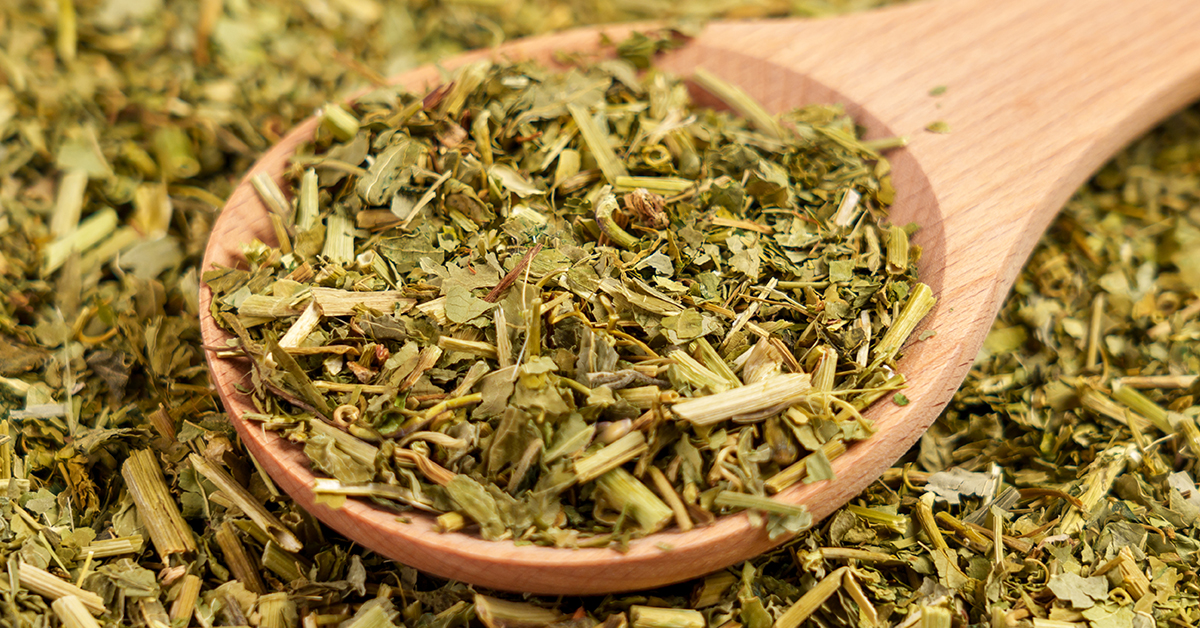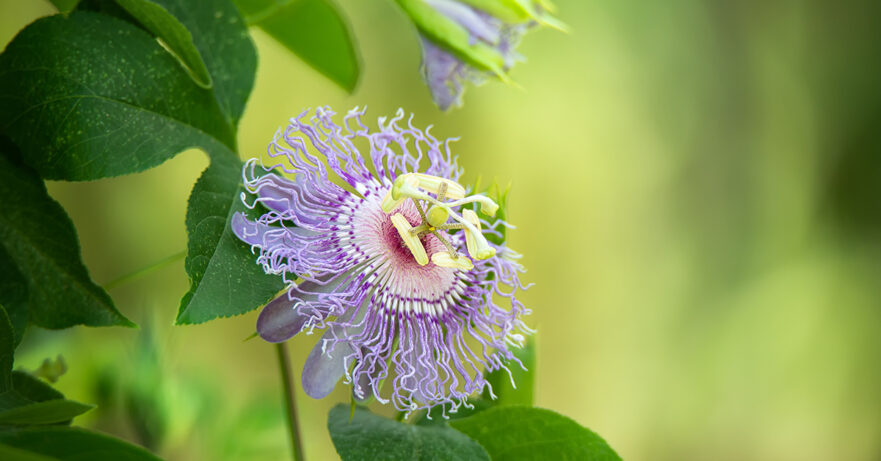In this monograph about passionflower:
📖 Introduction | 🌱 Botanical Description | 📜 Traditional Uses | 🔍 Phytochemistry | ✨ Applications and Uses | 🛡️ Safety Profile
📖 Introduction
Passionflower (Passiflora incarnata) is a perennial climbing vine esteemed in herbal medicine primarily for its anxiolytic and sedative properties. With its striking flowers and intricate structure, passionflower has traditionally been used to alleviate anxiety, promote relaxation, and support sleep, making it a valued herb in natural wellness.
| English Name | Passionflower |
| Latin Name | Passiflora incarnata |
| Parts Used | Leaves, whole plant |
| Traditional Uses | Alleviating anxiety, promoting relaxation, supporting sleep, easing spasms and pain |
| Herbal Actions | Hypnotic, antispasmodic, nervine, hypotensive |
🌱 Botanical Description
Scientific Classification
Passiflora incarnata belongs to the Passifloraceae family.
Physical Characteristics
Passionflower is recognized for its unique, radial flowers consisting of white petals and sepals with a ring of purple, blue, or pink filaments. It bears oval to lobed leaves and small, berry-like fruit called maypops.
Natural Habitat and Cultivation Details
Native to the southeastern United States, passionflower thrives in well-drained soils with full sun to partial shade. It is now cultivated in various temperate climates around the world for both its medicinal and ornamental qualities.
📜 Traditional Uses
Historically, passionflower has been utilized to treat a variety of nervous disorders, including anxiety, insomnia, and hysteria. It has also been employed to ease spasms and relieve pain, such as menstrual cramps and neuralgia. In folklore, passionflower symbolizes peace and tranquility, reflecting its calming effects.

🔍 Phytochemistry (Active Constituents)
The pharmacological activity of passionflower is attributed to its complex mix of phytochemicals, including:
- Flavonoids: Including vitexin and isovitexin, known for their potential anxiolytic effects, likely mediated through interactions with the GABA system, enhancing its calming effects.
- Alkaloids: Such as harmane, which are noted for contributing to the herb’s sedative properties, potentially involving modulating neurotransmitter systems and influencing GABAergic activity.
✨ Applications and Uses
Passionflower is commonly employed in herbal medicine for:
- Anxiety reduction: Its flavonoids are recognized to contribute to reducing anxiety and promoting a sense of calm without inducing sedation. These effects are attributed to the modulation of the GABA system.
- Sleep support: Passionflower is often used to improve sleep quality, particularly in individuals experiencing insomnia due to nervous unrest. Research indicates variability in its effectiveness, highlighting the importance of individualized assessment.
- Pain and spasm relief The antispasmodic properties of passionflower support its use in alleviating muscle spasms and tension, making it a helpful option for conditions like menstrual cramps.
It’s worth noting that while passionflower is widely used for these purposes, individual responses can vary, and it is always recommended to consult with a healthcare provider for personalized advice.
🛡️ Safety Profile
Passionflower is generally regarded as safe for most adults when used in moderation.
However, due to its calming effects, it may interact with sedative medications and substances, necessitating caution.
Due to limited research, pregnant and breastfeeding women are advised to consult a healthcare provider before using passionflower.
Individuals with pre-existing medical conditions or those on medication should also consult a healthcare professional before use.
📃 Related Posts
🌱 Related Herbs

